The Mousterian industry is a prominent and crucial aspect of the Paleolithic period, revealing invaluable insights into our ancient human ancestors’ cognitive capabilities and technological advancements. This article delves into the fascinating world of the Mousterian industry, exploring its characteristics, tools, and significance in shaping human history during this pivotal era.
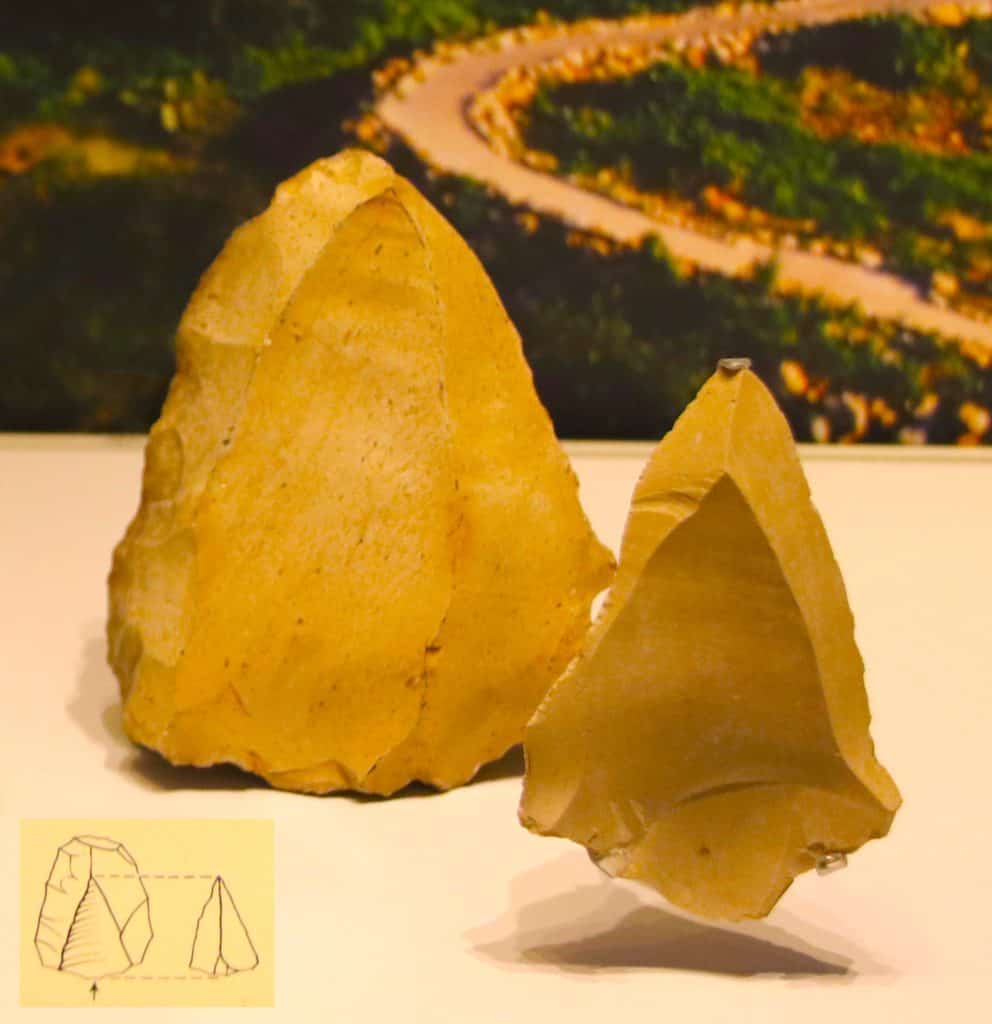
So, the Mousterian industry is a distinctive stone tool culture that emerged during the Middle Paleolithic period, approximately 300,000 to 30,000 years ago. Named after the prominent archaeological site of Le Moustier in France, where it was first identified, the Mousterian is primarily associated with Neanderthals. Still, it was also used by some early Homo sapiens populations.
Characteristics of Mousterian Industry Tools
Firstly, one of the defining features of the Mousterian industry is the Levallois technique, a sophisticated method of stone tool production. This technique carefully prepares a core stone by shaping it into a specific form. Then, specialized flakes were skillfully removed from the designed core to create various tool types, such as scrapers, points, and blades.
Acheulean Industry
Furthermore, scrapers, with their rounded edges, were used for working animal hides and preparing materials for various tasks. Points and blades were utilized for hunting and butchering activities, showcasing the adaptive prowess of these early human populations.
Mousterian Industry: Implications for Cognitive Abilities
In addition, the sophisticated nature of the Levallois technique suggests that the Mousterian industry was not just a product of chance or simple necessity but required complex planning, foresight, and cognitive abilities. The ability to envision the final product and execute precise actions to achieve it underscores the cognitive sophistication of our ancient ancestors.
Hunting and Subsistence Strategies
Furthermore, Hunting tools in the Mousterian industry indicate that hunting was a significant aspect of Neanderthal and early Homo sapiens subsistence strategies. The variety of tools also suggests an adaptable lifestyle, allowing these ancient groups to thrive in diverse environments.
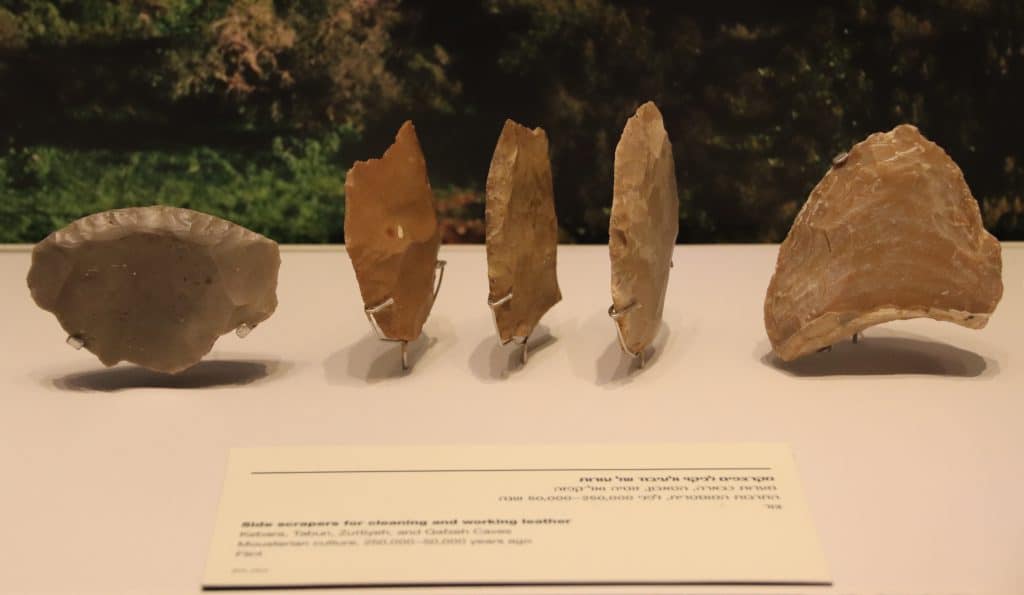
Social and Cultural Aspects
The widespread distribution of the Mousterian industry across Europe, the Middle East, and parts of Asia highlights the mobility and social networks of Neanderthals and early Homo sapiens. The existence of standardized tool-making techniques and the transfer of knowledge within and between groups indicate the development of social structures and cultural traditions.
The Land of Israel and Mousterian Industry
Archaeological excavations across Israel have uncovered Mousterian Industry stone tools, suggesting that Neanderthals and early Homo sapiens inhabited the region during the Middle Paleolithic period. These findings provide tangible evidence of human presence and activity in Israel dating back hundreds of thousands of years. Some of the notable archaeological sites where Mousterian tools have been discovered include:
Kebara Cave: An Important Site for the Mousterian Industry
Located in the Carmel Mountains of northern Israel, Kebara Cave is an important site that yielded significant Mousterian industry tools and human remains. The discovery of a nearly complete Neanderthal skeleton known as “Kebara 2” provided valuable insights into the physical characteristics and lifestyle of Neanderthals in the region.
Nahal Mearot Nature Reserve
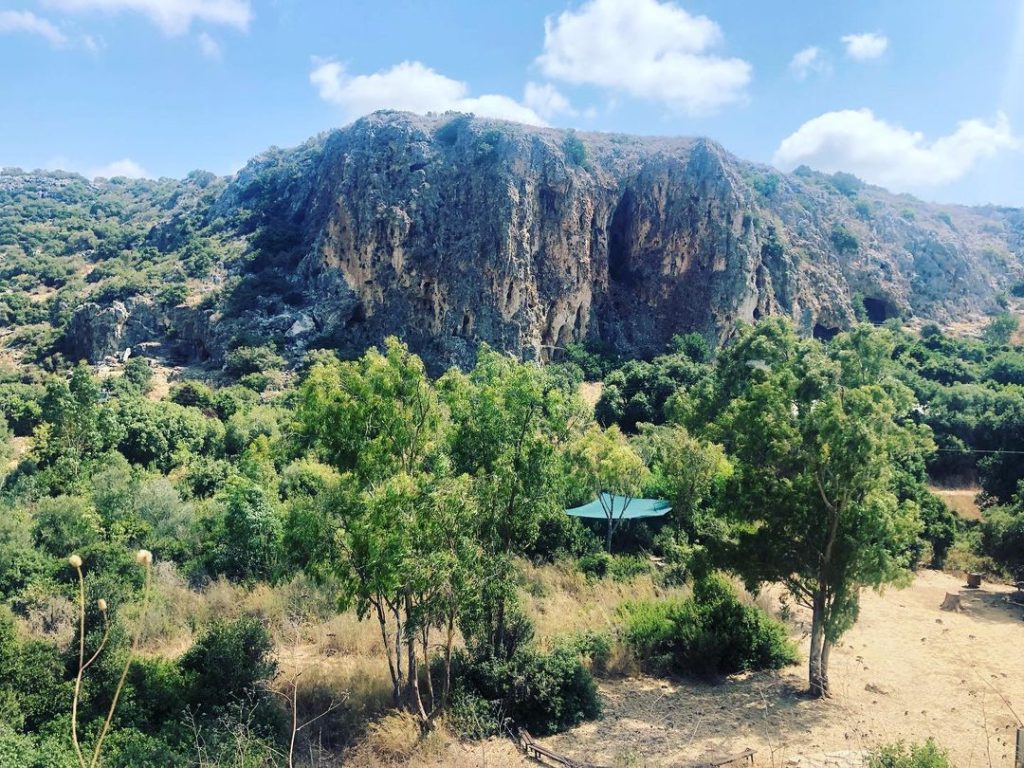
Tabun Cave:
Also situated in the Carmel Mountains, Tabun Cave is another crucial site where Mousterian Industry stone tools have been found. The cave’s archaeological deposits have revealed a sequence of human occupation spanning tens of thousands of years, including evidence of Neanderthal and early Homo sapiens activities.
Qafzeh Cave:
Qafzeh Cave, located near Mount Carmel, is renowned for its Mousterian artifacts and human remains. The cave has provided invaluable insights into the region’s cultural and behavioral practices of early humans.
Amud Cave:
Amud Cave, situated in northern Israel, has also yielded important Mousterian stone tools and remains. These tools and artifacts indicate early human habitation in the area.
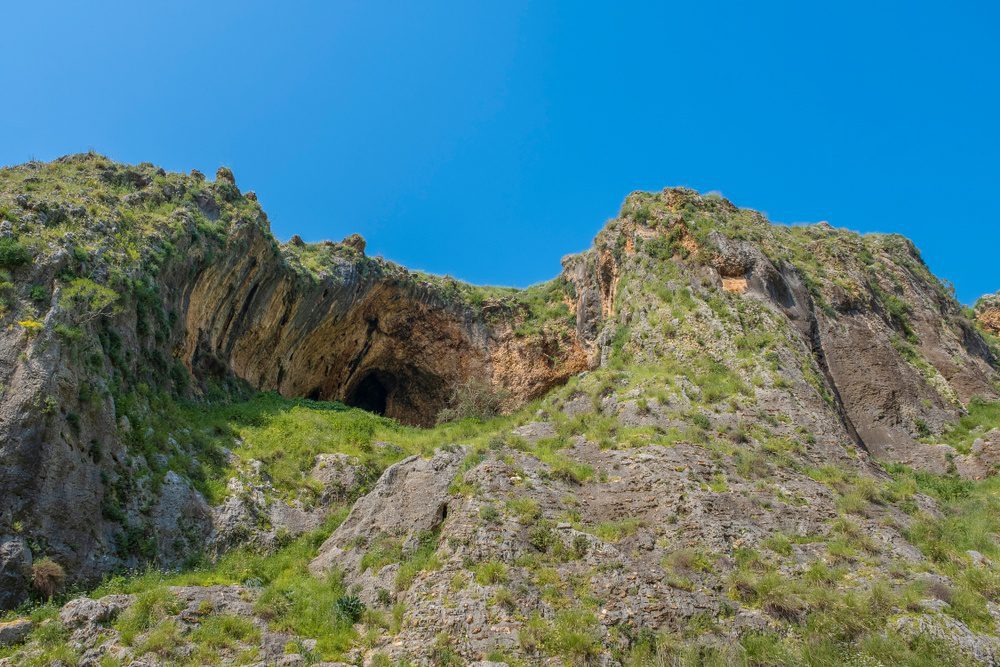
Hayonim Cave:
Moreover, Hayonim Cave, located in the western Galilee region of Israel, has revealed a wealth of archaeological deposits, including Mousterian Industry tools and evidence of human occupation.
Manot Cave:
Furthermore, Manot Cave, found in northern Galilee, is a relatively recent discovery that has provided unique insights into early human migration and interactions in the region. Mousterian industry tools and human remains found at the site have contributed to our understanding of human evolutionary history.
Stone Age Tour
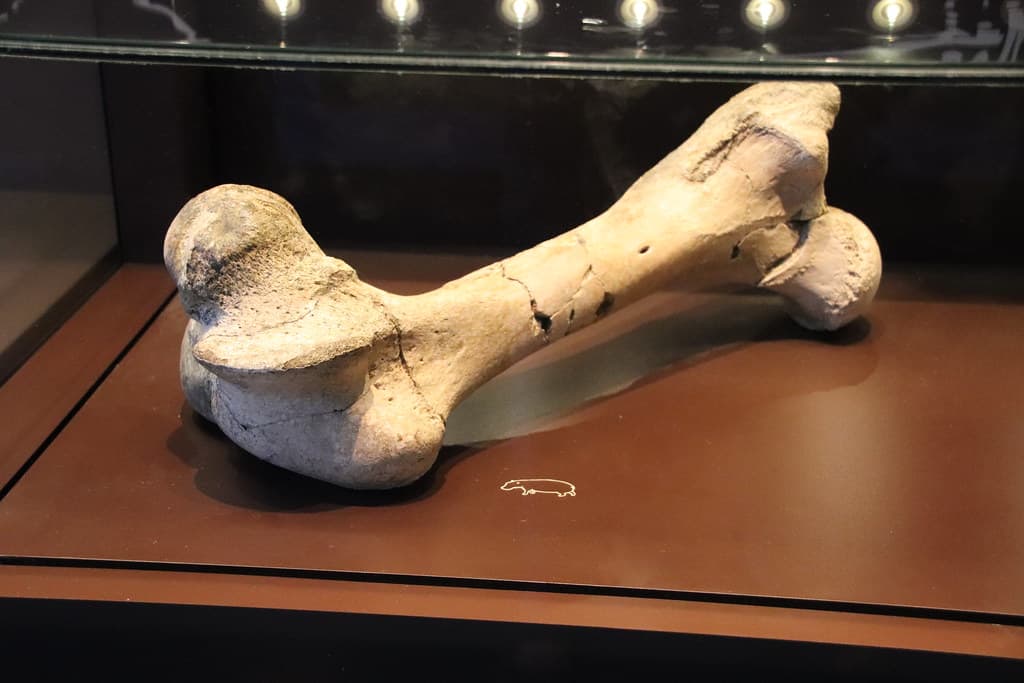
Last, it is important to note that ongoing archaeological research may lead to the discovery of additional Mousterian sites in Israel, further enriching our understanding of the prehistoric human presence in the region. These sites collectively contribute to the broader understanding of human evolution, cultural practices, and technological advancements in the Land of Israel during the Middle Paleolithic period.

